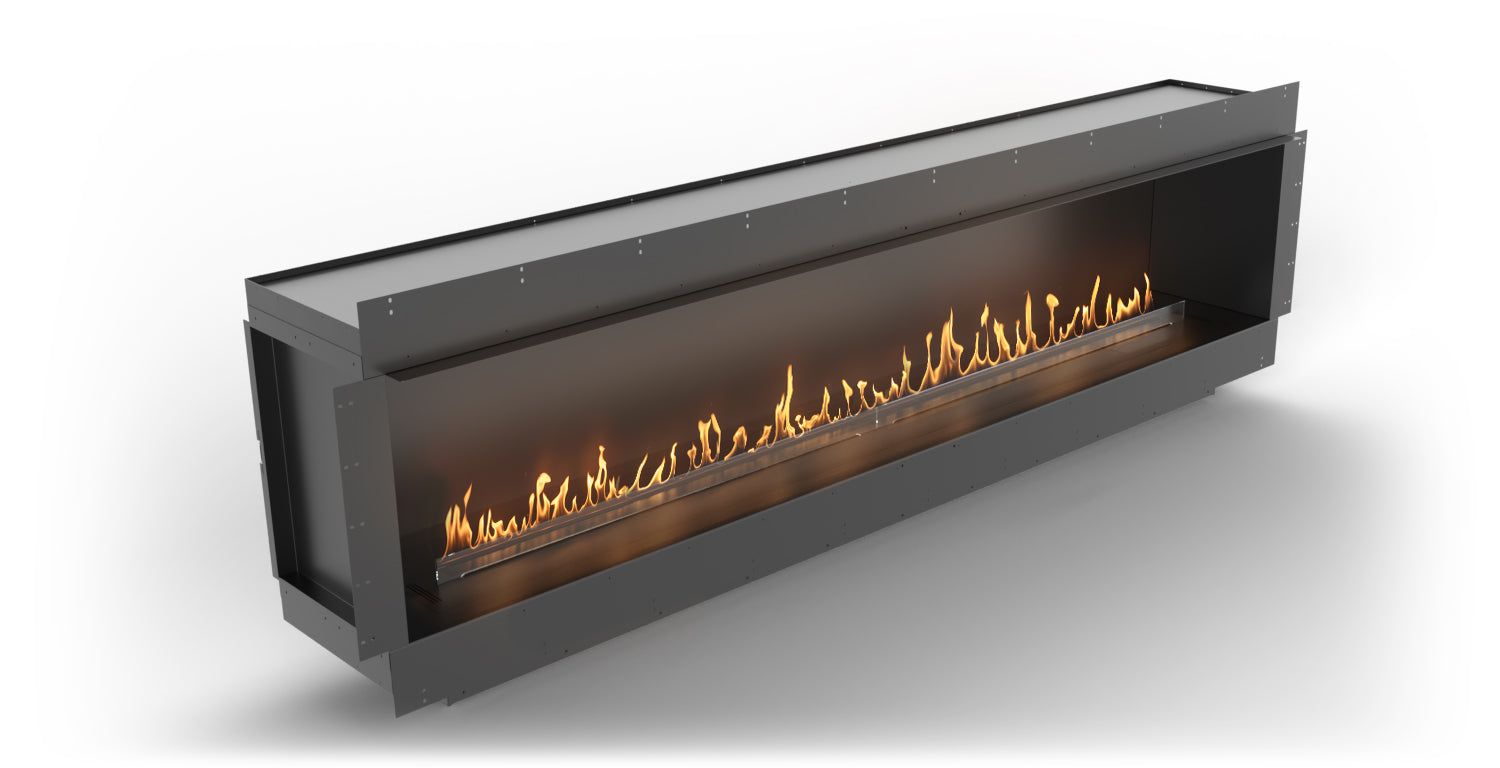Bioethanol Fires
With bioethanol fires, you get the cosy warmth without the hassle – no smoke, no ash, and next to no greenhouse gas emissions. Without the need for a chimney or flue, they can be installed in spaces where traditional fires are not possible, including kitchen islands and media walls. They’re a great choice for anyone who loves the atmosphere of a real flame without the hassle of a wood-burning stove.
We stock a wide range of styles, from freestanding bioethanol fireplaces to built-in and wall-mounted bio ethanol fireplaces, all designed to add warmth and modern style to any room.
Filters
discover
Flueless, Modern Bioethanol Fireplaces
At Firefly, we offer one of the most extensive collections of modern bioethanol fireplaces, bringing warmth and sophistication to any space – with no flue or chimney required. Running on clean, renewable bioethanol fuel, these eco-friendly fires produce real flames without smoke, soot or ash.
Choose from a wide range of styles from leading manufacturers such as Planika, Gloss Fire, Glammfire and Dru Spartherm. Options include freestanding units, wall-mounted fires and built-in models, making it easy to find a style that fits your home.

Bioethanol Fireplace Inserts
Designed to fit effortlessly into fireplaces or bespoke wall features, bioethanol inserts bring a stylish, modern touch and the comforting warmth of a real flame.
Running on clean-burning fuel, they need no chimney or venting, making installation simple. Many inserts can be customised to suit your interior, making them an ideal choice for stylish contemporary living.

Freestanding Bioethanol Stoves
A freestanding bioethanol fireplace gives you instant warmth without any fuss. Portable and stylish, it’s perfect for living rooms, offices – even out on the patio.
Designs range from traditional bioethanol wood burners to sleek, minimalist stoves. Their freestanding design and flueless design means they are easy to move or reposition as needed.

Wall-Mounted Bioethanol Fireplaces
Perfect for contemporary interiors, a wall-mounted bioethanol fireplace saves space while adding a striking, minimalist focal point to any room.
Like all bioethanol fires, they burn cleanly without smoke or ash, making them ideal for bedrooms, living rooms or open-plan spaces.
more bioethanol stove information
Bioethanol fires are best for localised heating, creating a cosy, inviting atmosphere in individual rooms, rather than serving as the primary heat source for the whole home.
A medium-sized model can comfortably warm an area of 20–30m², such as a lounge, bedroom or dining space. However, because they are designed more for ambiance than as a primary heat source, they are not a replacement for central heating. Many people use them as a stylish secondary heat option, especially in modern, well-insulated homes.
Fuel consumption depends on burner size and flame setting, but on average, one litre of bioethanol lasts between three and four hours. Some larger models with adjustable burners can run for up to eight hours on a lower setting. Bioethanol fuel is widely available from specialist fireplace retailers, DIY stores and reputable online suppliers. Firefly recommends using premium, low-odour bioethanol designed specifically for fireplaces to ensure clean burning and maximum efficiency - we are happy to advise on particular bioethanol fuel types as needed.
Maintenance is minimal on biofuel fires compared to traditional stoves. After each use, wipe down the burner tray or tank and check for residue before refilling. Every few weeks, inspect components for wear, especially seals or ignition systems in electronic models.
Because there’s no ash, soot or chimney to clean, upkeep is quick and straightforward, making these fires a popular low-maintenance choice. Additionally, always refer to the manufacturer's maintenance instructions for specific guidance.
Yes, most bioethanol stoves convert nearly all the fuel into usable heat, with very little waste. Many high-end models are designed with double-walled construction or insulated burners to retain heat for longer.
While they are not as powerful as wood or gas stoves for whole-home heating, they are efficient for short bursts of heat in individual rooms, making them economical for occasional use.
Absolutely. Because they produce no harmful emissions, bioethanol fires are safe for use in smoke-controlled areas, including London.
This makes them ideal for urban apartments or townhouses where wood-burning stoves may be restricted. Always check local regulations before installation to ensure compliance.
Bioethanol typically costs £2–£3 per litre, depending on the brand and quantity purchased. While this may seem more expensive per hour than wood or gas, many people value bioethanol for its clean burn, easy storage and eco-friendly credentials.
For those who only use their fireplace occasionally or for ambiance, the running costs are often comparable to decorative electric fires.
Yes, they are suitable for commercial or public spaces.. Bioethanol fires are frequently used in restaurants, hotels, bars and reception areas because they create a warm, welcoming atmosphere without the need for a flue or extensive ventilation.
Many commercial models are designed for long burn times and enhanced safety, including automatic shut-off features. Always consult local fire safety regulations before installing in public spaces.
Many premium models now feature remote controls, electronic ignition and even app connectivity, allowing you to adjust flame height, heat output or operating time with ease.
Some models include thermostatic regulation, automatically maintaining a chosen heat level for convenience and energy efficiency.
Yes, biofuel fires are excellent for patios, terraces and garden rooms. They work well in sheltered, well-ventilated outdoor areas, adding warmth and a decorative touch.
However, they should never be left unattended outdoors, and fuel should always be stored safely indoors away from direct sunlight or heat, and local regulations or restrictions on open flames should be considered.
No – that’s one of the biggest advantages of a bioethanol stove. Because bioethanol burns cleanly, producing no smoke, soot, or ash, there’s no need for a chimney or flue.
All you need is a well-ventilated room, and you’re good to go. This makes bioethanol stoves ideal for homes where installing a traditional fireplace or wood burner isn’t possible.
Firefly specialise in modern stoves for contemporary living. Alongside our range of bioethanol stoves we offer log burners, gas fires, electric stoves, vapour fires and outdoor fires from some of the world’s leading suppliers.
Firefly offer a comprehensive installation service for bioethanol fireplaces in London and the South East. With no gas connection or chimney required, we are able to install these fireplaces in almost any space.

Bioethanol Fire Installation London & SE
Need a bioethanol fireplace in London or the South East? Firefly offers a quick and straightforward fireplace installation service for homes, apartments and commercial spaces.
Because these fireplaces require no chimney or gas connection, they can be fitted almost anywhere. We install top bioethanol fire brands across Greater London, Kent, Surrey, Sussex and nearby areas, although we ship for self-installation across the whole of the UK.
Freestanding models are often ready to use the same day, while built-in options can be professionally installed for a perfect finish. Our team is here to guide you on placement, fuel choice and upkeep to keep your new fire running smoothly.
















